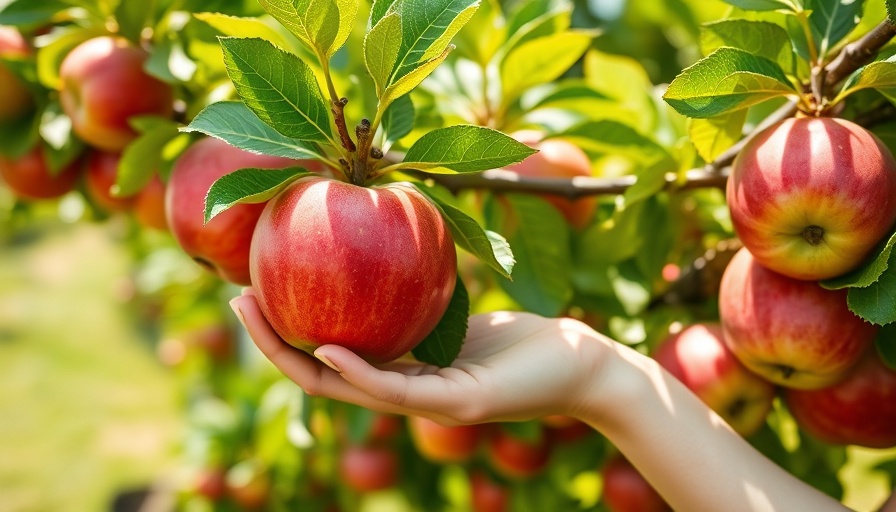
Apples: A Quintessential Fruit for Your Kitchen
Anyone who's taken a stroll through their local grocery store in September or October knows that apple season is in full swing. This versatile fruit is not only tasty but also packed with nutrients that can benefit your health. In our recent deep dive into apples, we explored their nutritional benefits, what to look for when selecting and storing them, and even a simple recipe that anyone can whip up with ease. Apples should be a staple in every home and there's no better time to embrace this delightful fruit!
In Garden Delights S1E8 Apples, the discussion dives into the various benefits and uses of apples, prompting us to explore their nutritional value and culinary potential further.
The Amazing Nutritional Benefits of Apples
First off, apples are a fantastic source of dietary fiber. One medium apple contains just about 80 calories and is cholesterol-free, making it a smart choice for those trying to watch their weight. In addition to fiber, apples provide a smidge of iron, calcium, and vitamin C. When looking for a healthy snack, consider the benefits of keeping apples at hand. They are easy to grab-and-go and great for kids, especially when sliced and diced. As Susan Howington from the Georgia Cooperative Extension suggests, incorporating apples into a healthy diet is a delicious way to increase fruit intake!
Picking and Storing Your Apples: Best Practices
Choosing the right apple at the store or farmer's market can have a huge impact on the quality of your recipe. It's essential to select firm apples without blemishes or bruises. Apples can continue to ripen after being picked, so look for varieties that suit your needs—Granny Smith for tartness in pies or honeycrisp for sweet snacks. After purchasing, store your apples in a cool, dry place, ideally in the refrigerator, to prolong their freshness for about three weeks.
The Joy of Growing Your Own Apples
If you’re inspired to grow your own apples, you’ll want to gather a bit of knowledge first, particularly when it comes to the types of trees that do well in your local climate. The University of Georgia offers resources explaining how to select the best varieties suited for your area, particularly focusing on disease-resistant types. Frank Hancock from the Georgia Cooperative Extension sheds light on the importance of understanding rootstock and scion wood in planting apples. If you live in a region affected by fire blight or apple scab, selecting the right variety is crucial for a successful harvest.
Making the Most of Apple Season: Delicious Recipes
Once you have the freshest apples in hand, consider making a delightful diced apple salad. It’s a simple dish that pairs well with everything from grilled meats to as a quick snack. In the episode of Garden Delights, Susan demonstrated how to quickly prepare diced apple salad using just a few ingredients: apples, celery, pecans, yogurt, and a dash of salt. It’s perfect for warm weather and an excellent way to keep your meals refreshing and healthy.
Exploring the Tradition and History Behind Apples
Apples have a rich history that intertwines with numerous cultures. From the iconic story of Johnny Appleseed planting orchards across America to their associations with education and knowledge, apples have become emblematic of many societal values, including health and abundance. Embracing this unique fruit allows you not only to enjoy its flavors but to connect with a longstanding tradition of home gardening and seasonal eating.
Calling All Apple Enthusiasts!
Now that we’re all geared up about apples, let the local community inspire you to grow or cook with this timeless fruit! Be it planting your own tree or trying out new recipes, there’s no shortage of opportunity to dive deeper into the world of apples this season. Check out the resources offered by the Georgia Cooperative Extension for guides on canning, freezing, and preparing apples, and take your appreciation for this incredible fruit to new heights.
 Add Row
Add Row  Add
Add 



 Add Row
Add Row  Add
Add 
Write A Comment